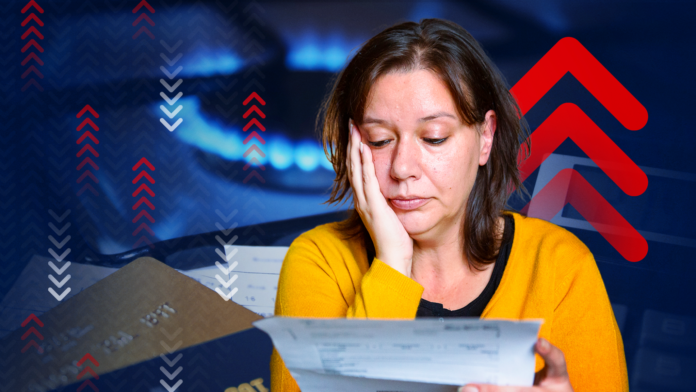The energy price cap specifies the maximum amount energy suppliers can charge end users for each kilowatt hour (kWh) of energy consumed. The amount you pay is decided by how much energy you use.
Ofgem calculates the cap as a government safeguard. This is because they regulate the energy suppliers, not the oil and gas production industry.
So the cap ensures that the profit made by energy suppliers is limited.
The energy price guarantee is a short-term policy designed to safeguard consumers from the recent large spikes in wholesale gas prices.
The guarantee went into effect on October 1, 2022, and will remain until April 1, 2024. This means that consumers will pay less for electricity than they would have if the price cap had been in place. To know more, you can check out Business Energy Comparison and read below for more details.
Why is the price cap in place?
Customers who do not shop about and are locked into their supplier’s basic default energy tariff are at a competitive disadvantage in the energy market.
So, customers on a default energy tariff are subject to the price cap, regardless of whether they pay by direct debit, regular credit, prepayment meter, or Economy 7 (E7) meter.
The cap ensures that customers on default energy tariffs pay fair and cost-reflective pricing.
How is the price cap set?
Suppliers cannot charge you more than the cap set for each kilowatt hour (kWh) because Ofgem monitors suppliers to ensure their default tariff rates conform.
Here are some instances of what they consider while determining the pricing cap:
- Costs of wholesale electricity. This is the cost providers pay for the energy they provide to consumers.
- Network expenses. These are from constructing and maintaining energy networks transporting energy to consumers’ houses.
- The price of a policy. These are government initiatives to conserve energy, reduce emissions, and promote renewable energy.
- Supplier operating expenses
- VAT: A 5% tax on the tariff level.
The price cap is for the typical household consumer with medium energy consumption.
The price cap does not apply to your overall bill, which will vary based on how much energy you use.
Your energy bill will affect how you pay for energy, where you reside, the sort of meter you have, and your consumption.
Every three months, they increase the level to reflect inflation and changes in underlying prices.
The Energy Price Guarantee
The government announced the Energy Price Guarantee to assist consumers, which took effect on October 1, 2022.
This would cut the unit cost of electricity and gas such that households in the United Kingdom with typical energy use will pay roughly £2,500 a year on their bill until March 31, 2023, and around £3,000 a year until March 31, 2024.
These estimates are from a typical family with a dual electricity and gas bill paid via direct debit.
This will determine the amount you pay by how much energy you use, where you reside, how you pay for power, and the type of meter you have.
Frequently Asked Questions
Listed below are the most common questions regarding energy and energy consumption.
Why are energy costs so high?
For a long time, the wholesale price of gas has been excruciatingly high. And, because Russia is a crucial supplier to worldwide markets, the conflict between Russia and Ukraine has caused wholesale gas prices to vary drastically, soaring to more than five times their pre-conflict levels.
What else is the government doing about the cost of energy?
Under the Energy Bills Support Scheme, all domestic electricity users in the UK, including those in park homes, will receive a £400 credit automatically deposited to their accounts over six months beginning in October.
If you have a prepayment meter, the £400 will be applied to your balance or paid in vouchers.
Ofgem will ensure that tenants recognize the value of this assistance, where their landlord pays their energy costs as part of the rental agreement.
The money will not have to be repaid in any case.
This reduces the average bill for 2022/23 from £2,500 to £2,100.
In addition, off-grid homes that utilize alternative fuels such as heating oil instead of gas will receive a £100 incentive.
What is ‘average’ consumption?
The Ofgem price cap and the new Price Guarantee refer to typical households with average annual use. This equates to a 2-3 bedroom home utilizing 12,000 kWh of gas and 2,900 kWh of electricity per year.
You are charged a fee for each unit of gas and electricity used. This is the capped/guaranteed pricing.
A recent energy bill will show you how much kWh you are consuming. Remember that neither the cap nor the Price Guarantee limits the size of invoices, so the more you use, the more you pay.
Remember that you must also pay a standing charge for gas and an electricity standing charge. This is a set amount per day, regardless of how much energy you consume – or if you use none.
What if you are on a fixed-rate deal? Will the price cap affect you?
If you’re still on a fixed-rate energy tariff, you will be subject to an energy price cap once your contract expires and you switch to your supplier’s SVT or another fixed tariff. The vast majority of households now use SVTs.
The government is lowering the unit costs charged for fixed-rate tariffs under the Price Guarantee. So that customers save the same amount – up to a maximum of £1,000 per year – as those with SVTs.
Is there a price cap for businesses?
Previously, there was no pricing cap for commercial customers. While the Ofgem price cap is still in effect, it only applies to residential homes in England, Scotland, and Wales; there is no equivalent for commercial energy consumers.
Northern Ireland has its regulatory structure for domestic energy provision but no price cap.
The government has stated, however, that they will implement steps to control company energy rates for at least six months.
Domestic consumers in Northern Ireland will also have their energy costs capped. The government will assist individuals not connected to the gas system and instead use heating oil, for example.
Residents of park houses and off-grid heat networks will be fine and receive comparable assistance through a discretionary fund established under the Price Guarantee.
Final Thoughts
It’s clear that as energy bills have risen, people have started to look at cheaper options. But the worry with these caps is that it might not be profitable for suppliers to invest in cheaper energy sources.
However, the consumer price cap prevents sharp increases that could harm customers, so this should be fine.
A more pressing question is whether the price cap is enough to help reduce your rising energy bill.
Use the information provided above to make a well-educated decision about whether or not the cap will work for you.

















